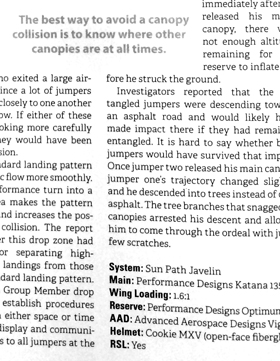195: Auctioneers Are Braver Than I Am
On the day this post publishes, I’ll be in Antarctica—hopefully ascending an ice-covered mountain. Right before I left home, one of my closest friends was praying aloud for my journey and declared, “This trip is so Ryan.” Not only do I think heaven already knew that, but most of you probably do, too.
What you probably don’t know, though, is that my clients are braver and more adventurous than I am. First: most of them are parents. That’s some high-stakes stuff bigger than any bungee jump or sky dive. Second, most have employees. After my wife developed a successful staffing agency years ago, she confirmed that I’m not cut out for that adventure. More to the point: all of my clients work on speculation. They take projects not knowing how big their paycheck will be or, in some cases, whether there will even be a paycheck on the other end of the deal.
That takes some serious guts, a risk-taking ability I don’t have.
Even though I’m not brave enough for that gamble, I try to grasp the weight of that, the stress of that. Frankly, I’m amazed at the grace many of these auctioneers show in the process—especially when there are two commas in the estimated gavel price.
Between you and me, I absorb some of that stress. I recognize that my clients are performing on a high wire that’s exposed to swirling, cultural winds. They have to be more efficient than ever in a marketing landscape with more media outlets, more subcultures, more competition, and more educated buyers than ever in human history. Along with that, my contribution directly impacts their livelihood. That responsibility makes me really want their advertising to work.
Sadly, though, I can’t always make their advertising work. Here are four of the reasons that sometimes happens.
What works might be something neither of us knows yet.
There are a lot of media and technologies with which I don’t have experience. Same goes for my clients. That includes options already in the marketplace and the ones that demand will soon bring to the marketplace. Some are niche outlets for unique assets. Others are entire platforms that will change how we interact with prospects. Yet others are entities in a particular asset or geographic market that our prospects know but we don’t.
Google can help some with the ignorance, as can interviewing the seller. Oftentimes, adding capability will mean adding vendors, who each specialize in their niche craft. Discovery of new techniques and new media requires experimentation, but that exploration may not help the auction at hand. That’s why almost every auction budget should include some testing of new techniques.
What works might cost more than we have budget to execute.
Sometimes, the best way to reach potential buyers isn’t feasible because of the asset value and the ensuing advertising budget. We can’t take the asset on a world tour like Christie’s can with a nine-figure painting. Maybe a mailing list and postage are out of reach, maybe high-profile billboards, maybe telemarketing, maybe the magazine or news site the right prospects read. Surprisingly enough, I’ve regularly seen where there was somehow no money in the budget even for Facebook, one of the least expensive tools in today’s advertising tool box.
To avoid all of this, the potential buyer needs to be identified before contract signing; and the media necessary to reach them needs to be determined before the budget is set. If you sell the same asset category on a regular basis, you can do that by consulting your buyer acquisition formulas.
What works often isn’t what I’m asked to create.
Regularly, I can’t help an auctioneer find motivated bidders because they aren’t asking me to do so. They’re asking me for something else. I’m not offended by that. I make a significant part of my income each year, generating media that:
• isn’t independently tracked for efficacy or efficiency,
• has little-to-no distribution plan [not even kidding],
• is a last-ditch, hail Mary pass at the end of an unsuccessful or even non-existent campaign, or
• is less likely to work because of its messaging, visual content, and/or emphasis
The tension for me is the balance between (A) submissively making money and (B) pushing back or asking questions that would cost me income. I’ve swayed often from one side of that continuum to the next, and I’m still trying to find the right balance.
The market may not want what we’re selling right now—or at least at the price we’re attempting.
Even the best advertising doesn’t work, if there isn’t a buyer in the marketplace to respond to it. Buyers drop out when the market is flooded with cheaper alternatives, when technology has moved on, when repair or maintenance makes even a free asset expensive, or when location of the asset or the likely buyer is a liability. Finally, there may be potential buyers but none who are comfortable with the terms and/or the process of an auction purchase.
So, market evaluation before signing an auction contract may be the most important part of the promotional campaign. Sometimes the best advertising for a brand is the advertising not wasted on projects that should be declined.
Thankfully, these four scenarios are more exception than rule; and we’re surprising sellers with superlative results on a regular basis. The desire to maintain that success challenges me to keep learning and adapting and passing along what I learn. The residual results provide for me to chase the smaller adventures you see in my Facebook posts—while I try to keep up with your professional example.







 For a combined birthday & anniversary gift, my wife bought me
For a combined birthday & anniversary gift, my wife bought me  To a rookie, these reports seem extremely thorough, explaining what caused each fatality, what could’ve been done (if anything) to avoid it, and even a list of the type & brand of all the gear the deceased was implementing at the time of the incident. Each report tells how many years the jumper had been skydiving and how many jumps they had successfully completed prior to their last one—both cumulatively and within the past 12 months, based on their log book. One of the recent fallen had jumped over 6,000 times, 75 of those in the past year. One exception to the disclosure transparency: only age and gender are given, as no names are divulged.
To a rookie, these reports seem extremely thorough, explaining what caused each fatality, what could’ve been done (if anything) to avoid it, and even a list of the type & brand of all the gear the deceased was implementing at the time of the incident. Each report tells how many years the jumper had been skydiving and how many jumps they had successfully completed prior to their last one—both cumulatively and within the past 12 months, based on their log book. One of the recent fallen had jumped over 6,000 times, 75 of those in the past year. One exception to the disclosure transparency: only age and gender are given, as no names are divulged. Why not be more like the editors of Parachutist? Why not just put the truth out there for what it is, and let the marketplace determine its value?
Why not be more like the editors of Parachutist? Why not just put the truth out there for what it is, and let the marketplace determine its value?




